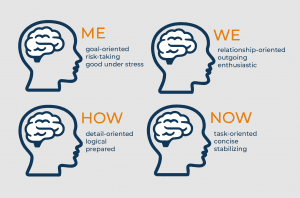
Understanding Our Clients And Their Needs
Grace Crawford
Project Manager
I’ve previously shared about giving your clients a $100 experience by anticipating their needs, but how do we become proficient in understanding our clients and their needs?
We need to be well-versed in what makes our clients tick before knowing what their needs are. We talk a lot about psychology in marketing, but there’s plenty of psychology in building client relationships to go around as well.
If you’re already successful at client relationships, you’ve probably shaped your communication style on what works best for each client you have—whether you’ve realized it or not. You understand that no two clients are the same, so the communication and, ultimately, the relationship should be customized accordingly.
While there is an array of personality tests readily available – Myers Briggs, Enneagram, etc., I once learned a helpful insight from a managing partner that you can simply categorize a client’s personality into four broad types. Learning your client’s personality type can help ensure a good working relationship and a better understanding of your client. Seasoned account managers can oftentimes figure out what prominent personality type their client has in their first meeting with them.
The Four Broad Personality Types:

“ME” – Those who are goal-oriented and especially want to inspire and lead people they work with. They enjoy taking risks and do well under pressure.
“WE” – Those who are relationship-oriented and love coming up with solutions together. They are outgoing and enthusiastic.
“HOW” – These folks are data driven. They are detail-oriented, logical, and prepared. They ask a lot of questions in order to make educated decisions.
“NOW” – Those who, bottom line, “want it now.” They enjoy communication that is concise and streamlined as they have no time for “fluff.”
As you can see, these personality types are wildly different—you wouldn’t want to bombard a “NOW” client with numerous phone calls detailing every aspect of a project’s progress and its nuances like you would, perhaps, with a more collaborative “WE” client. Your “ME” client may have a more immediate positive response to a cutting-edge marketing strategy, whereas your “HOW” client would likely require more data to back up your recommendations before getting on board.
Ultimately, the foundation for successful accounts is healthy client relationships. Approaching client interactions with an intent to learn how they prefer to connect with ideas is essential in both maintaining and elevating your business.
Resources:
Customer retention is extremely important to your ROI, check out this article to read more





